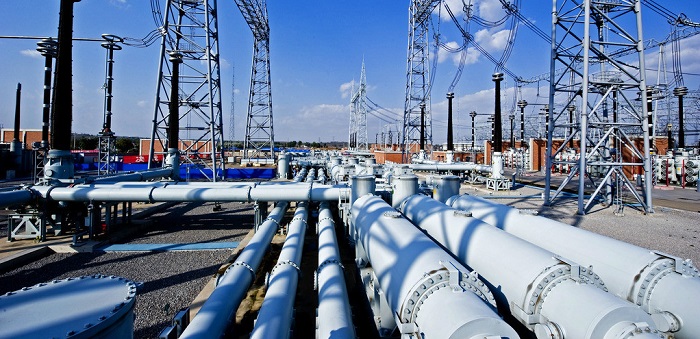Although pipeline transportation is considered the safest and fastest way to transport hazardous products, there are many potential problems. Whether operating upstream, midstream or downstream, pipeline monitoring is an integral part of the oil and gas industry. Under the influence of transportation flows and dynamic environmental conditions, pipelines are susceptible to a variety of structural damage, such as corrosion, cracks, leaks, and detachments, among others.


In addition to severe resource losses, pipeline leaks can have dramatic, irreversible impacts on the environment and wildlife, while threatening worker and public safety. According to a 2018 study, liquid pipeline incidents cost $326 million annually in the United States alone, of which $140 million is environmental and remediation costs. Research also shows that it typically takes nine hours to identify an incident and another five hours for operators to respond.
Many pipeline systems begin at remote exploration sites where surface networks are unreliable or non-existent. As a result, monitoring options are limited to labor-intensive manual inspections or expensive satellite networks, neither of which can collect data with the desired level of granularity. Even when available, terrestrial connections like mobile and Wi-Fi are very power-hungry while requiring expensive data plans imposed on the endpoints. Typically, sensors collect very small amounts of data and only need to send messages when values fall outside a predefined range. Therefore, traditional data plans are redundant, which increases the cost of implementing and maintaining large-scale monitoring networks.
The Internet of Things (IoT) employs new sensor and communication technologies to make asset monitoring easier and more affordable than ever. Low-power wide area networks (LPWAN), in particular, introduce a low-cost, energy-efficient method to collect granular telemetry data. Due to its wide range characteristics and star topology, LPWAN can connect large-scale, geographically dispersed metering points with less infrastructure required. Private LPWAN is most ideal in the oil and gas sector because its network coverage can be flexibly adapted to a company’s specific needs offshore and in inaccessible areas.
Paired with miniaturized, multi-sensing smart sensors, powerful low-power wide-area networks can unlock a wealth of critical information about the structural health of pipelines and their operating conditions. Sensor data can be forwarded to an on-site human-machine interface for immediate response, or to a central management system or cloud platform for long-term storage and analysis.
This IoT-based pipeline monitoring network can enhance oil and gas operating practices in multiple ways to reduce costs and downtime, minimize environmental footprint, and enhance safety and regulatory compliance.
1. Accelerate troubleshooting and response
24/7 visibility into pipeline integrity means any anomalies or deviations can be reported immediately. While a drop in pressure obviously indicates a leak, other sensor parameters can help identify structural problems with the pipeline earlier, before a serious leak or fatal explosion occurs. For example, ultrasonic and sonic sensors can report abnormal sound waves that hint at the onset of cracks and Diffusion and stratification. Likewise, magnetic sensors can detect changes in pipe wall thickness due to corrosion.
Smart sensors communicate not only early damage, but also its location and severity to identify and expedite required actions. Minimizing the time between failure and repair is key to minimizing material loss and contamination from product leakage. Additionally, detecting damage from the outset simplifies the repair process, thereby reducing the costs and downtime associated with repairs.
2. Automate manual tasks
IoT-based condition monitoring networks reduce the need for regular on-site inspections and eliminate the hassle of manually recording data. In addition to minimizing human errors, this also helps save costs and increases worker productivity as they can focus on more important tasks. Reducing site visits, especially to remote areas, also reduces total truck travel time, thereby reducing fuel use and CO2 emissions.
3. Enable advanced maintenance strategies
By collecting data on pipeline integrity and health, failures can even be predicted and prevented through predictive maintenance strategies. Through analysis of past failure modes, defect growth prediction and risk assessment models can be developed. In addition to this, long-term integrity deterioration assessment helps calculate the actual remaining service life of the pipeline. This allows structural bottlenecks to be diagnosed and maintenance and parts replacement planned strategically to avoid damage. Predictive maintenance not only helps avoid costly unplanned downtime, but also redundant planned downtime that often results from companies taking a speculative, plan-based approach to prevention.
4. Optimize asset utilization and future design
IoT sensor data enables companies to analyze and understand pipeline behavior under different external conditions, including structural loads, weather changes, soil properties, moisture and pH, etc. This information can help improve future engineering and construction practices to optimize the effective service life of pipelines. Additionally, for older pipelines that have been in service for decades, sensor data can verify their integrity so that they continue to operate safely.
The emergence of IoT brings unprecedented asset visibility and exceeds the capabilities of traditional industrial networks. Deploying IoT solutions does not necessarily require large upfront investments or dangerous, cumbersome modifications to brownfield systems. Emerging wireless solutions like low-power wide area networks (LPWAN) and new sensor technologies can easily and cost-effectively transform pipes into critical assets that support the IoT.
